Things You Need To Know Before Buying Your Camping Sleeping Pad
A sleeping pad is one of the most essential pieces of gear for comfortable and warm camping trips. Unlike sleeping in a bed at home, the hard ground offers little cushioning or insulation. A quality camping sleeping mat helps provide a barrier between you and the terrain while also retaining your body heat.
With so many options on the market, it can get confusing to decide which sleeping pad best fits your needs. This guide will walk you through the key factors to consider so you can find the perfect camping mattress for your next adventure.
#1 Types of Camping Sleeping Pads
There are three main types of sleeping pads used for camping:
1. Self-Inflating Sleeping Pads
Self-inflating sleeping mats contain open-cell foam that expands when you open the valve to automatically suck in air. This makes setup quick and convenient — no pumping required. However, they do need a few manual breaths to fully inflate.
Pros:
- Comfortable foam structure
- Good warmth and insulation
- Quick inflation
- Durable construction
Cons:
- Heavier than other pad types
- More expensive
- Bulkier when packed
A top-rated option is the Tahan Panthera Inflatable Sleeping Pad. It offers robust comfort with its 10cm pad thickness and 16cm built-in pillow. The durable 40D polyester stands up to rough terrain while keeping you cozy. And it packs down easily into a compact roll for transport thanks to its self-inflating open cell structure. Convenient features like multiple valves, connection buttons to link pads, and a machine-washable surface make it ideal for fun group camping in varied conditions across Malaysia.
2. Air Pads
Air pads rely solely on air for inflation, without foam. Hand pumps, breath or stuff sacks are used to fill them. They offer impressive warmth despite their light, minimalist structure.
Pros:
- Very lightweight and compact
- Less expensive than self-inflating
- Comfortable thickness options
Cons:
- Require inflation effort
- More prone to punctures
- Can be noisy when moving
3. Foam Pads
The simplest option, foam sleeping pads are essentially lightweight foam mats that can be rolled or folded up. They offer basic insulation and cushion at the lowest cost.
Pros:
- Lightweight
- Compact roll size
- Durable
- Affordable
Cons:
- Not as comfortable
- Minimal insulation
- Bulkier packed
After deciding which pad type suits your priorities, there are a few other key considerations when choosing your camping sleeping pad…
#2 Size and Shape Considerations
Camping sleeping pads come in a variety of lengths, widths, and shapes to suit different body types and sleeping positions.
Length
Common pad lengths:
- Regular (72 inches ≈ 182cm): Fits most people up to 6 feet tall
- Long (77+ inches ≈ 195+cm): Ideal if over 6 feet tall or you like leg room
- Short (47 inches ≈ 119cm): Lightweight option covering hips to shoulders
Width
Typical widths at widest point:
- 20 inches ≈ 50cm: Suits most solo sleepers
- 25 inches ≈ 63cm: Comfortable extra room with less risk of slipping off
- 30+ inches ≈ 76+cm: Very spacious for larger frames or tandem sleeping
Rectangular pads offer room to spread out in multiple positions. Tapered “mummy” styles help save weight and space for backpackers while conforming more to typical sleeping bags.
#3 Thickness and R-Values
A sleeping pad’s ability to insulate from the ground is measured by its R-value (thermal resistance rating). The higher the R-value, the better it resists heat transfer and insulates.
Common R-Values:
- Summer warmth (R-1 to R-2): Allows more heat transfer, best in hot conditions
- 3-season warmth (R-3 to R-4): All-around comfortable rating for cooler nights
- Winter warmth (R-5+): Maximizes insulation for frigid conditions
In terms of thickness, more cushioning equals more comfort:
- 1-2 inches (≈ 2.5 – 5cm) – Firm base with minimal padding
- 2-3 inches (≈ 5 – 7.6cm) – Balance of stability and cushioning for most people
- 3+ inches (≈ 7.6cm) – Deluxe thickness for side sleepers who want a plush feel
When assessing R-values and thickness specs, make sure to consider the low temperatures you plan to camp in. Pairing your sleeping pad with an appropriate sleeping bag and shelter is also key to complete your sleep system.
#4 Weight and Packed Size
Car campers who don’t have to hike far with gear can opt for thicker, cushier self-inflating mats without worrying about weight or bulk.
Backpackers prioritizing minimal pack loads will want the lightest, most compact pad possible while still getting adequate warmth and padding.
Typical weight ranges by pad type:
- Foam pads – 1 lb. (about 0.45kg) or less
- Air pads – 1 to 1.5 lbs. (about 0.45 – 0.68kg)
- Self-inflating pads – 2 to 5 lbs. (about 0.9 – 2.26kg)
And when packed down for storage or transport:
- Foam pads – 14 x 5 inches or larger
- Air pads – 9 x 4 inches (about Nalgene bottle sized)
- Self-inflating pads – 10 x 6 inches or larger
With so many Camping Sleeping Pad options to choose from, keeping these key considerations in mind will help you select the perfect model for comfort, warmth and convenience on your outdoor getaways!
#5 Special Features to Look For
Beyond basic size and insulation specs, some nice extra features can improve sleeping pad performance and convenience:
Multiple valves – Separate “in” and “out” valves allow easier inflation adjustment and faster deflation packing up. Models like the Tahan Panthera use this design for quick transitions.
Connection buttons – Link multiple pads together for one huge sleep surface. Helpful when car camping with family or groups.
Built-in pillows – Integrated pillow baffling provides cushy head and neck support without bringing an extra.
Washable surfaces – Maintain hygiene by cleaning sweat and dirt off sleeping pads regularly.
Patch repair kits – Fix minor punctures in the field and get back to snoozing. Always carry one just in case!
Compression straps – Attached straps allow you to shrink packed size for squeezing pads into tight spaces.
While not essential, convenience extras like these can transform good ol’ sleeping mats into deluxe camp comfort!
TAHAN Panthera Inflatable Sleeping Pad
FAQs about Camping Sleeping Pads
From basic $25 (about RM116) foam pads up to $200+ (about RM933+) for ultra-insulated air pads. Mid-range self-inflating and air pads offer the best balance at $125-$175 (about RM583 – RM816).
Submerge in water and look for bubbles, apply soapy water to suspect areas then press, or listen closely for leaks. Use included patch kits or tape.
Look for R-5 and up for sub-freezing temperatures. Pair with a winter-rated sleeping bag and shelter.
If over 6 ft. tall, choose a long (77+ inch) pad. Consider how you position your legs and if your pack helps support.
Use a gentle soap and sponge with warm water. Let fully air dry before storage. Store unrolled in a dry, temperate place.
Yes! A pad helps insulate from cold through the bottom of single hammocks. Look for baffled or quilted surfaces that contour better.
Thank you for taking the time to explore our article! If you’re hungry for more camping tips and outdoor adventures, check out our next insightful piece on essential gear for a memorable experience here. Happy reading!

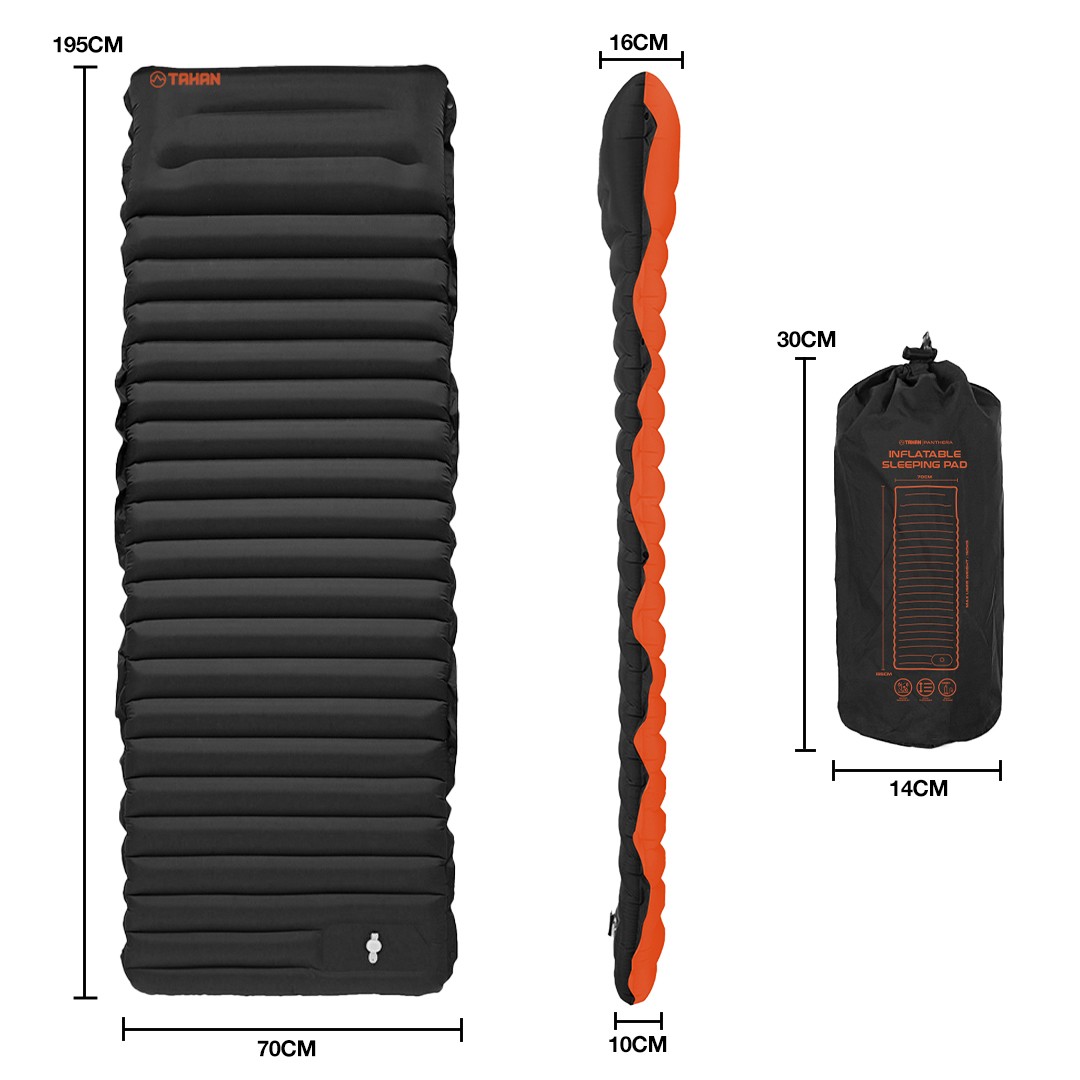
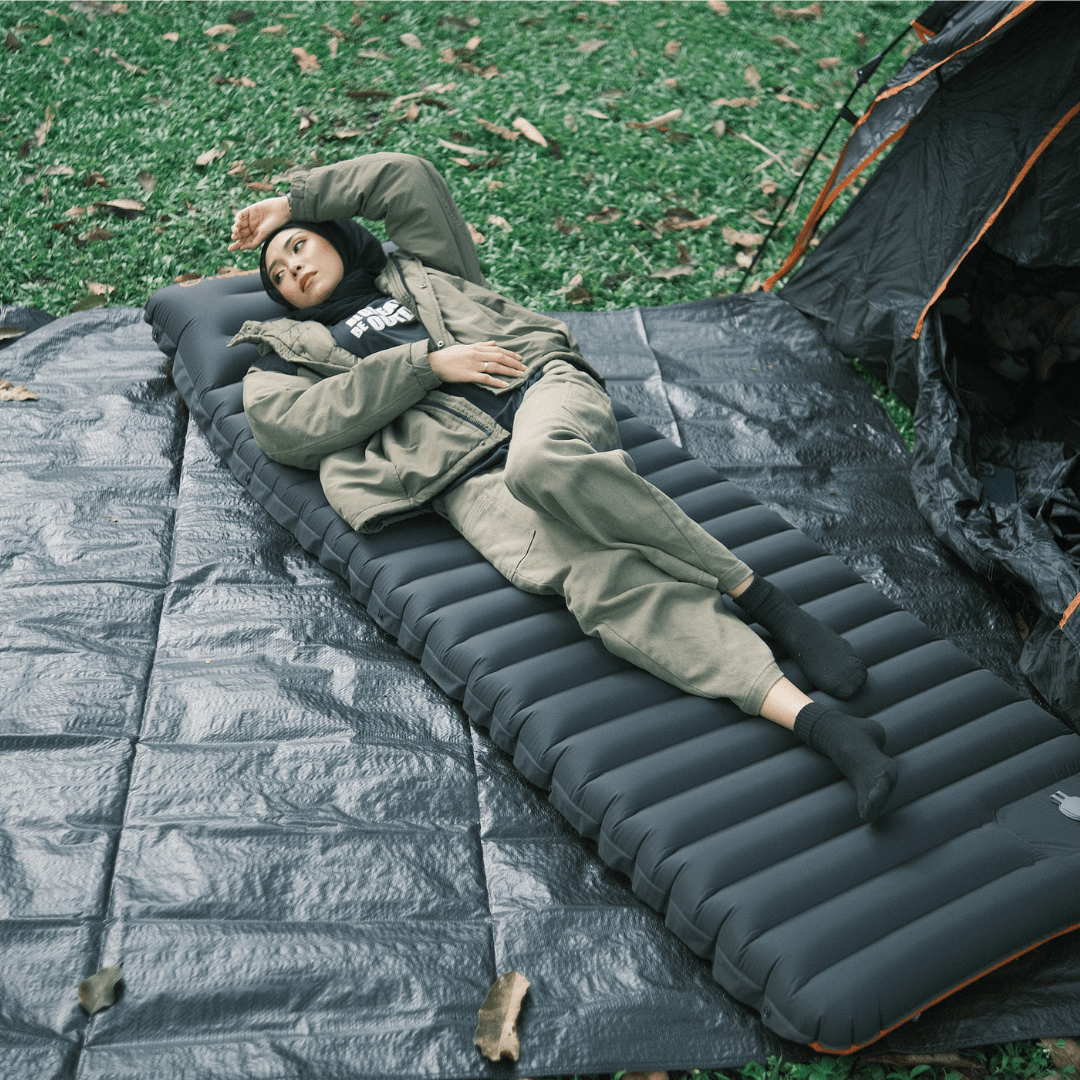
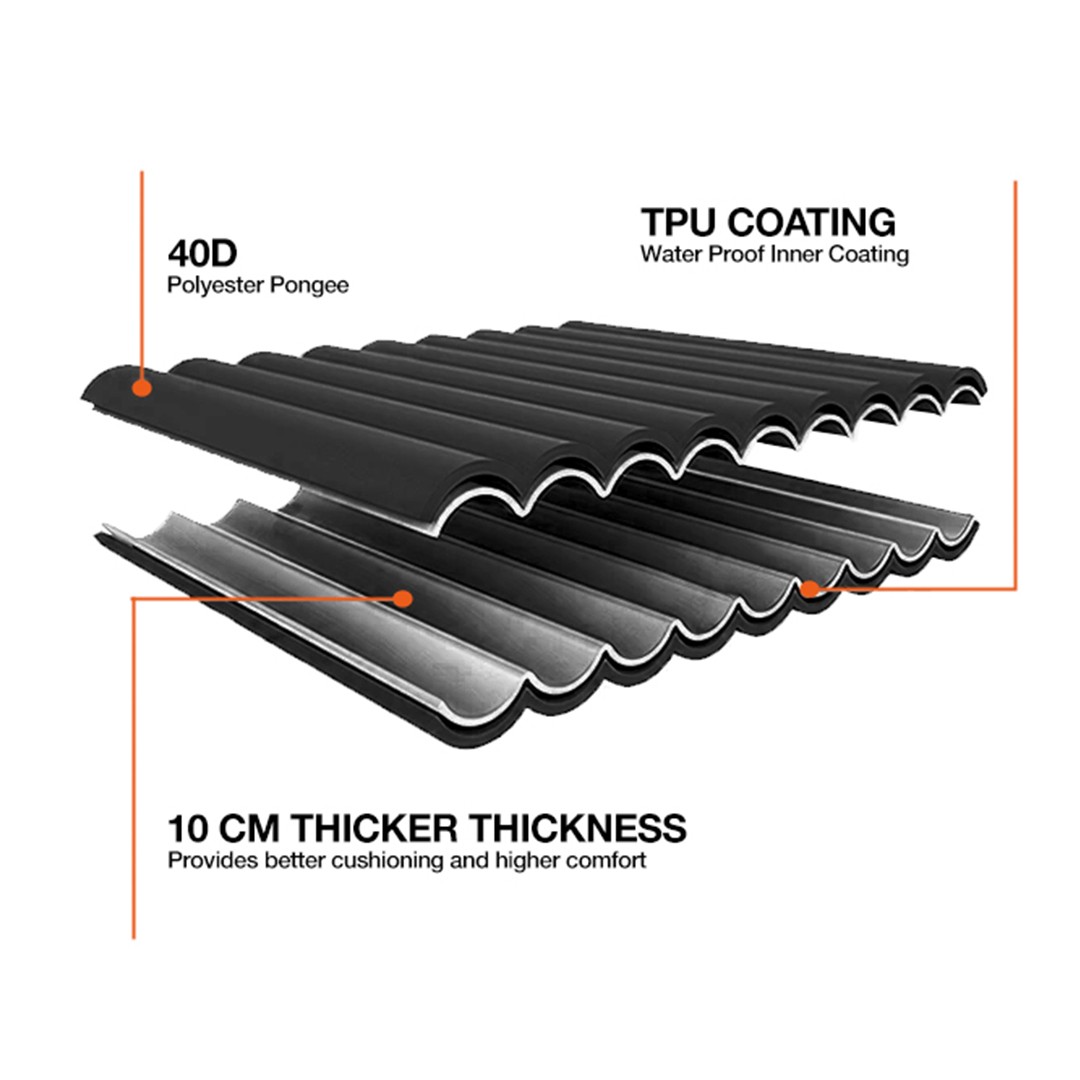
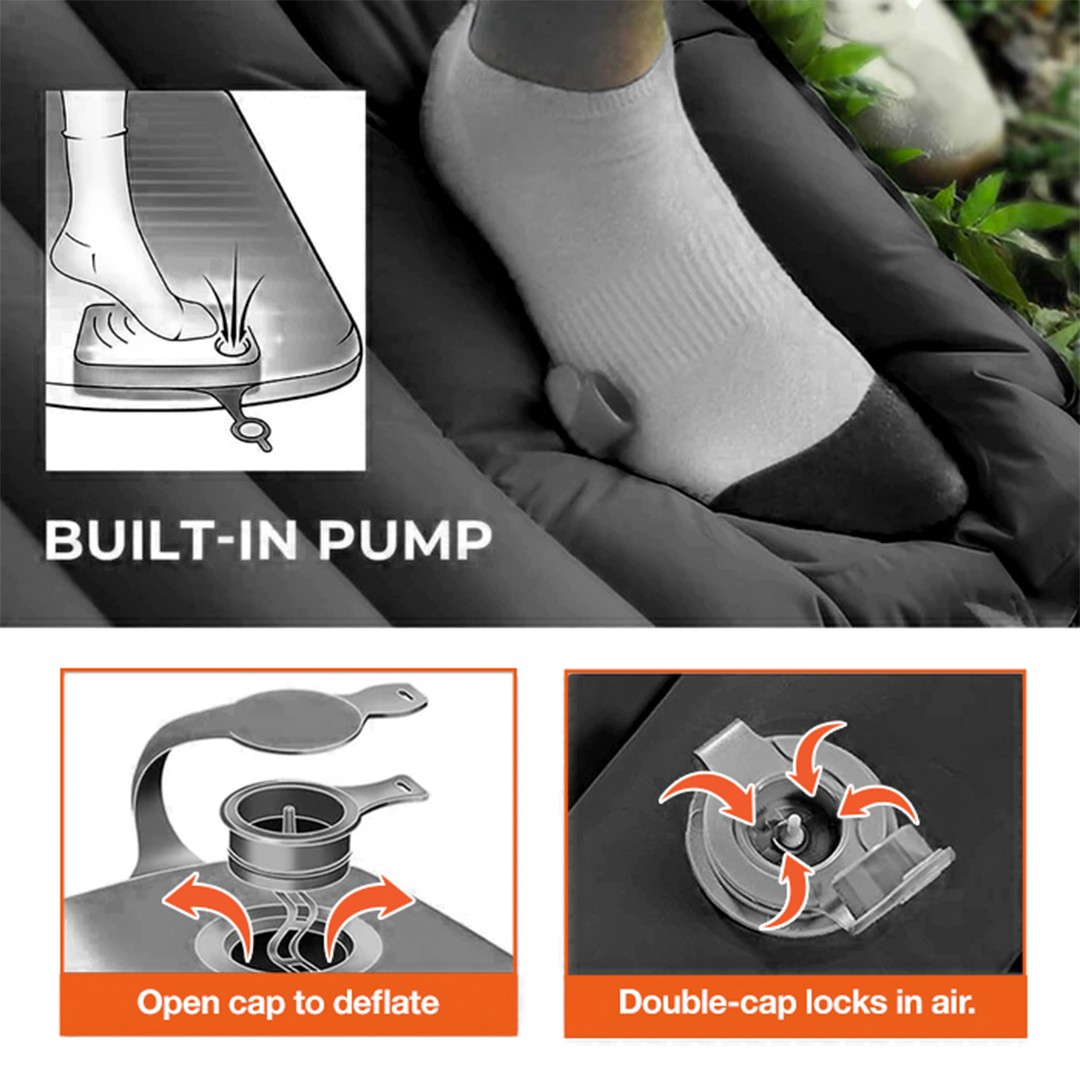

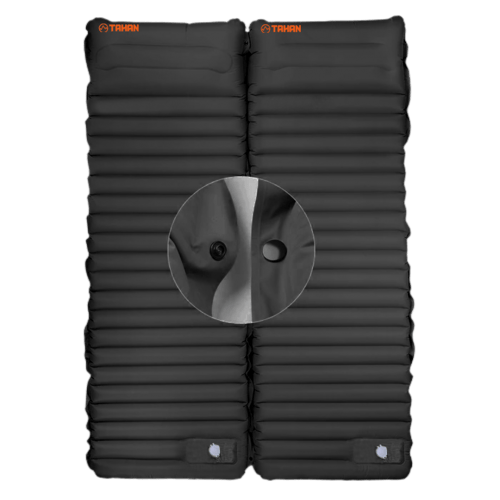
Shop Our Gears
Camp & Hike
TAHAN
COMBO
SLEEP SYSTEM
More tips that you might find useful:
Camp Cooking Gear Guide – Build the Ultimate Camp Kitchen!
Top 5 Most Popular Campsites in Selangor
Ultimate Guide to Tropical Leisure Camping in Malaysia: TAHAN’s Top 5 Gear Picks
The Ultimate Guide to Hammock in Malaysia: Comfort, Adventure, and Relaxation
Pet-Friendly Camping Site in Malaysia
Camping Escapes Near Kuala Lumpur
Best Hiking Apps to Enhance Your Outdoor Experience
Top 5 Camping Spots in Penang